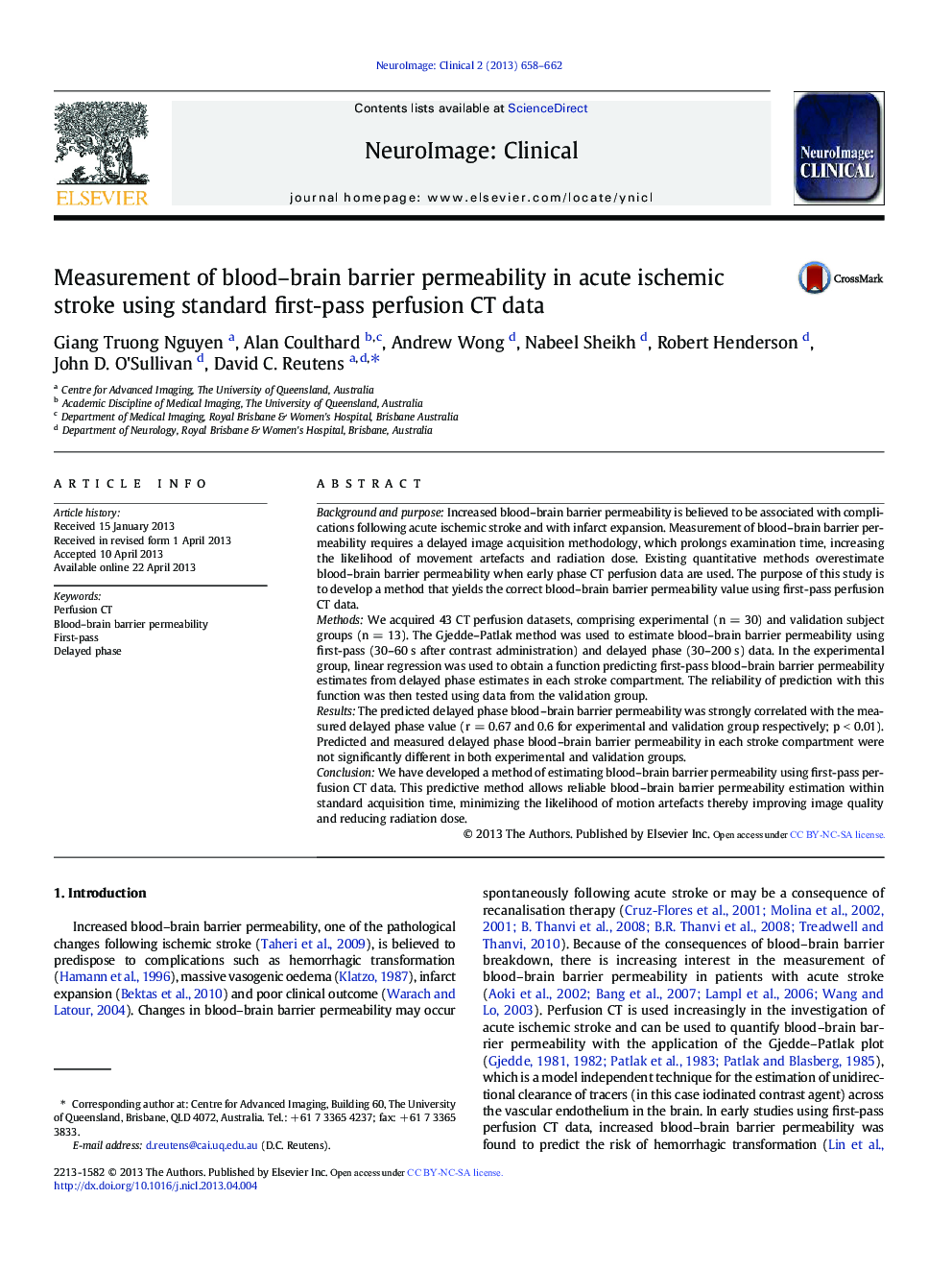| Article ID | Journal | Published Year | Pages | File Type |
|---|---|---|---|---|
| 3075548 | NeuroImage: Clinical | 2013 | 5 Pages |
•Delayed phase BBBP can be predicted from first-pass perfusion CT data.•Predicted BBBP was not significantly different from delayed phase measurements.•Prediction model allows reliable BBBP estimation within the standard acquisition time.
Background and purposeIncreased blood–brain barrier permeability is believed to be associated with complications following acute ischemic stroke and with infarct expansion. Measurement of blood–brain barrier permeability requires a delayed image acquisition methodology, which prolongs examination time, increasing the likelihood of movement artefacts and radiation dose. Existing quantitative methods overestimate blood–brain barrier permeability when early phase CT perfusion data are used. The purpose of this study is to develop a method that yields the correct blood–brain barrier permeability value using first-pass perfusion CT data.MethodsWe acquired 43 CT perfusion datasets, comprising experimental (n = 30) and validation subject groups (n = 13). The Gjedde–Patlak method was used to estimate blood–brain barrier permeability using first-pass (30–60 s after contrast administration) and delayed phase (30–200 s) data. In the experimental group, linear regression was used to obtain a function predicting first-pass blood–brain barrier permeability estimates from delayed phase estimates in each stroke compartment. The reliability of prediction with this function was then tested using data from the validation group.ResultsThe predicted delayed phase blood–brain barrier permeability was strongly correlated with the measured delayed phase value (r = 0.67 and 0.6 for experimental and validation group respectively; p < 0.01). Predicted and measured delayed phase blood–brain barrier permeability in each stroke compartment were not significantly different in both experimental and validation groups.ConclusionWe have developed a method of estimating blood–brain barrier permeability using first-pass perfusion CT data. This predictive method allows reliable blood–brain barrier permeability estimation within standard acquisition time, minimizing the likelihood of motion artefacts thereby improving image quality and reducing radiation dose.
Graphical abstractFigure optionsDownload full-size imageDownload as PowerPoint slide
